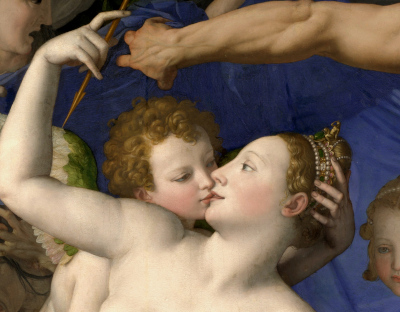Bronzino was certainly one of the most skilled Mannerist artists to have come from Florence in the 16th century. He is famous for serving as the court painter of Cosimo I de' Medici, which brought large amounts of portraiture into his oeuvre.
Introduction
Whilst portraits would dominate his output, Bronzino would also find time to work on religious and allegorical subjects as well. He would feature some prominent figures within Florentine society as a result of his status as a court painter and his style often included references to masters from the past. Certain postures and angles would be directly influenced by specific paintings and sculptures from the likes of Raphael and Michelangelo.
His own style of portrait painting is known to have influenced other court painters across Europe who followed on in the coming centuries and his approach was famed for its elegance, as well as the particular detail that he would replicate in the clothing of his illustrious subjects. Few painters, even of that period, were able to deliver such precision that could even be used by fashion historians to better understand the clothing worn by the rich and famous in Florence at that time. Some figures would also appear several times within his career, allowing us to visually track their development over time, such as Eleanor of Toledo, for example.
Influences
The biggest influence on Bronzino would have to be Pontormo, who served as his tutor, to a certain degree. Although the younger would take much technical advice from his colleague and friend, it would be wrong to claim that their styles were overly similar. Pontormo, a decade older, was more expressive in his portraiture, where as Bronzino's depictions contained a reserved calmness which perfectly suited the status of his subjects. For this reason, Bronzino paintings would lose popularity within the Mannerist movement for several centuries after his death but in recent years their technical prowess has been re-imagined and promoted.
Modern historians tend to regard him as the finest Florentine Mannerist artist, and his contributions to drawing and poetry have also been examined more closely in recent years. One can also track the progression of the Mannerist movement by the changes that occurred in his own style across his career, as he started to develop more of a unique, personal approach over time.
Stylistic Development
The early works of Bronzino were more clearly in line with the teachings of Pontormo, with an expressive nature that was typical of the early Mannerist approach. It was only later, when joining the court of Cosimo I de' Medici, that his signature style would start to appear. He was an impressively gifted artist whose technical brilliance allowed him to deliver elegant portraits with precise detail across their entirety. Most today will admire his use of colour and the decorative touches that he delivered in the various items of clothing that his subjects wore.
His popularity within the court is underlined by the repeated portraits that he completed of Cosimo himself, as well as members of his family and his court. Whilst restrictedin the types of content that he could cover, Bronzino seemed content with focusing on quality within each piece. He would also sometimes be given other projects to work on that brought variety to his oeuvre, such as for major events and also the decoration of key buildings within Florence. It was from commissions such as these that his work with religious and allegorical topics would appear.
Bronzino's Most Famous Paintings
Surprisingly, the artist's most famous painting is not actually one of his formal portraits, but instead an allegorical artwork from 1544-1545, known as Venus, Cupid, Folly and Time. Besides that piece, his highlights include the Medici circle fairly prominently, with a number of depictions of Eleanor of Toledo being particularly memorable because of her stunning attire and the skilled use of colour that he used. His paintings remain a good example of how tastes can change over time, and how an artist may become fashionable once more, even centuries after initially being rejected as static or cold, as many once claimed.
One might in fact describe Bronzino as an artist's artist, providing a recipe of advanced techniques in which the most subtle of details could be included within a piece. Whilst he moved away from the influence of his teacher Pontormo over time, many of the ideas that he learnt remained, such as the use of bright tones and ultimately he would surpass the fame of his master, to become one of the most highly regarded Mannerist painters who would also heavily influence many other European court painters.
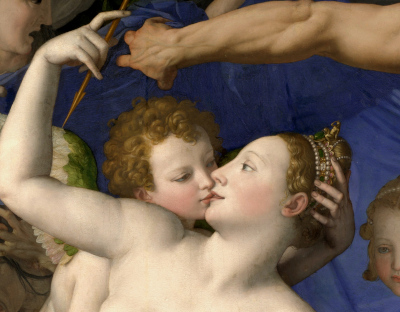
Venus, Cupid, Folly and Time
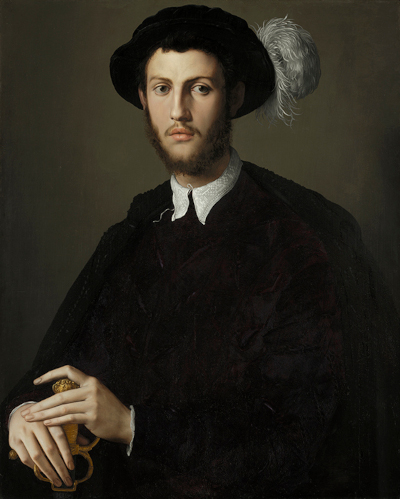
Portrait of a Young Man
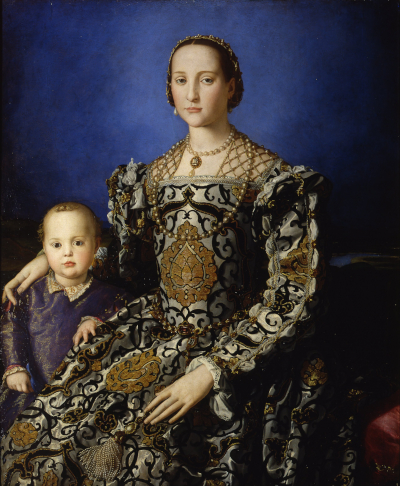
Portrait of Eleanor of Toledo
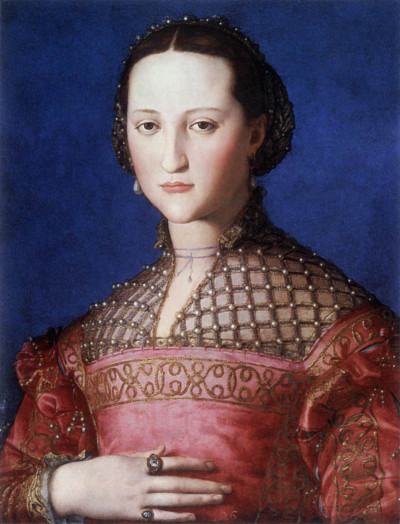
Eleanor of Toledo
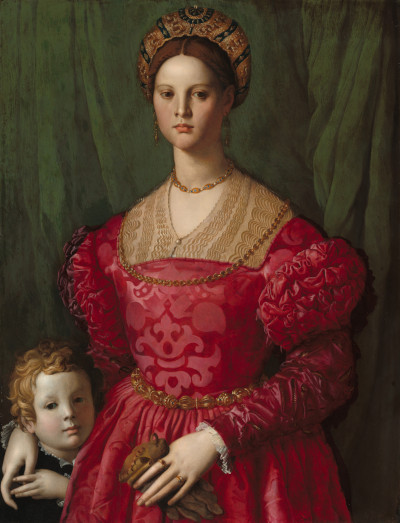
A Young Woman and her Little Boy
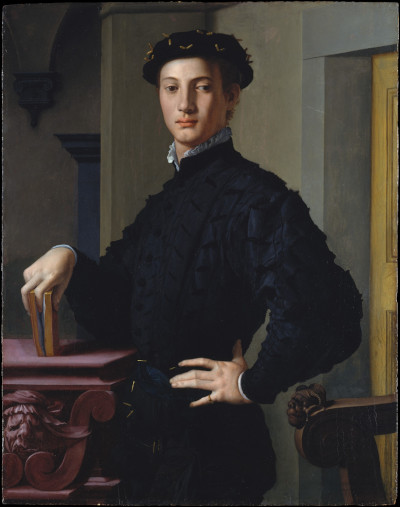
Portrait of a Young Man with a Book
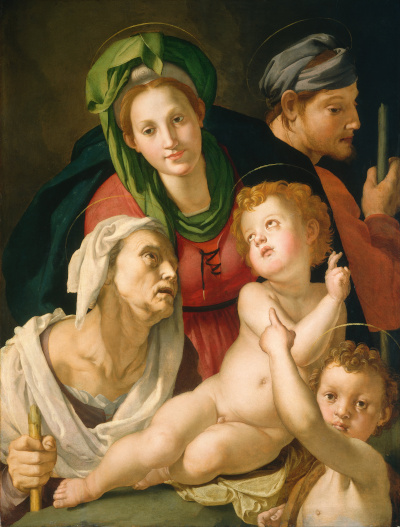
The Holy Family
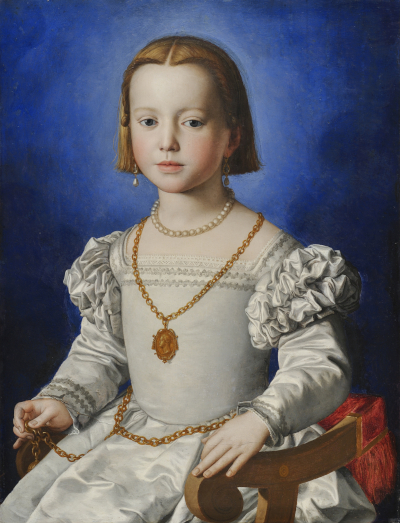
Portrait of Bia de' Medici
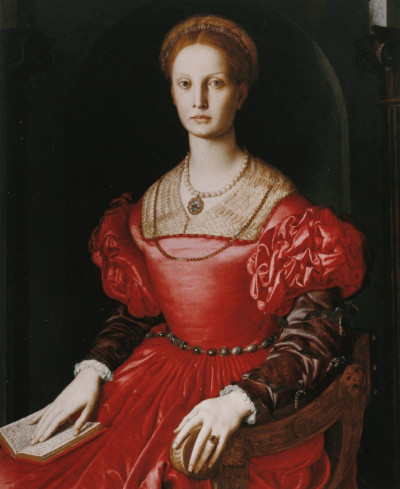
Portrait of Lucrezia Panciatichi
 Bronzino.jpg)
Portrait of Cosimo I de' Medici (in Armour)
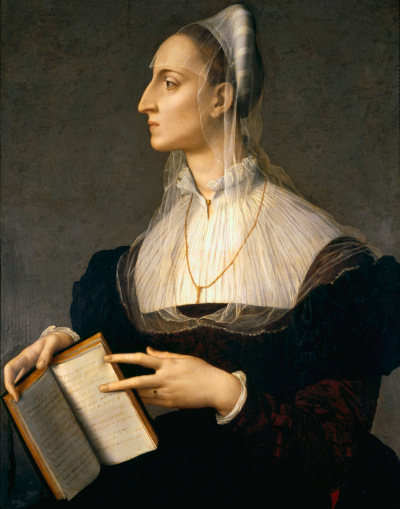
Portrait of Laura Battiferri
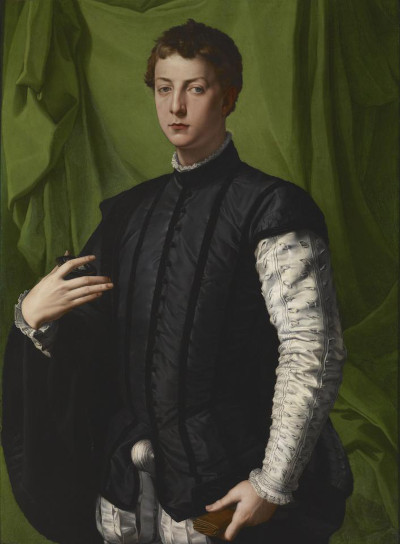
Lodovico Capponi
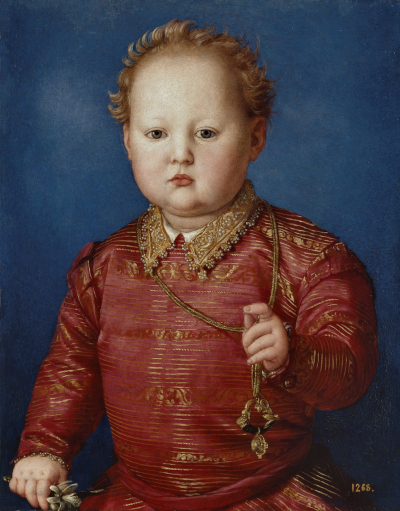
Don Garcia de' Medici
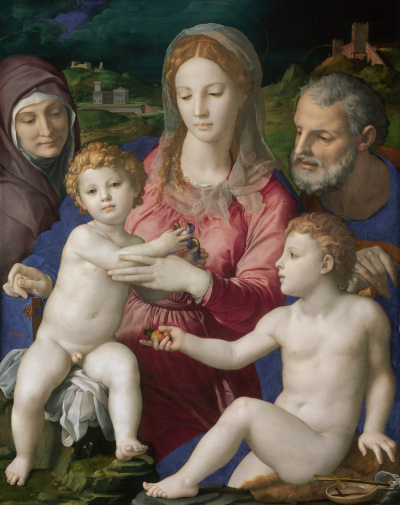
Holy Family with St Anne and the Infant St John the Baptist
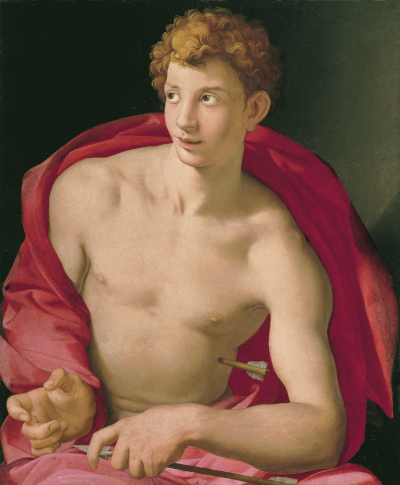
Portrait of a Young Man as Saint Sebastian
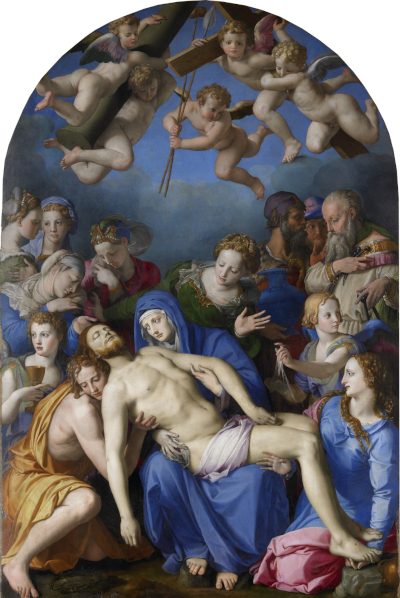
Deposition of Christ
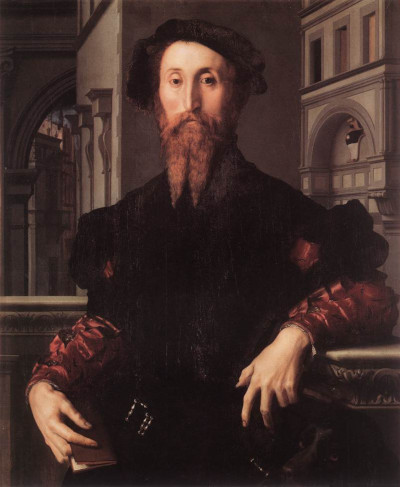
Portrait of Bartolomeo Panciatichi
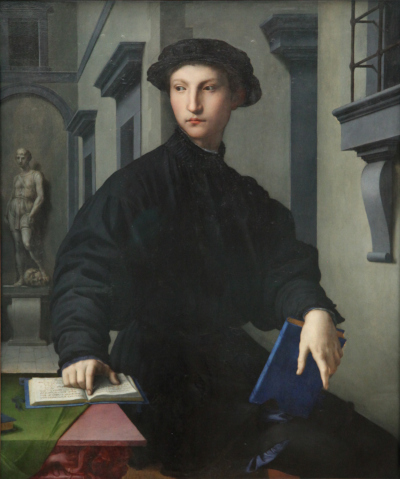
Portrait of Ugolino Martelli
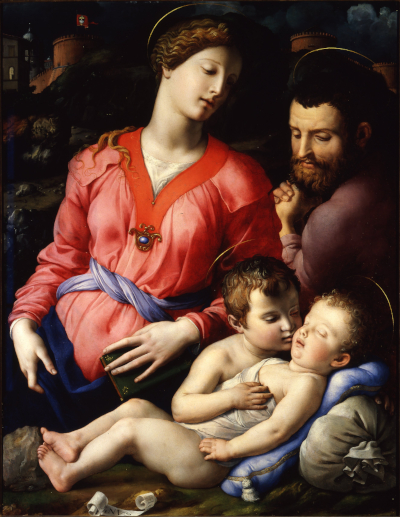
The Panciatichi Holy Family
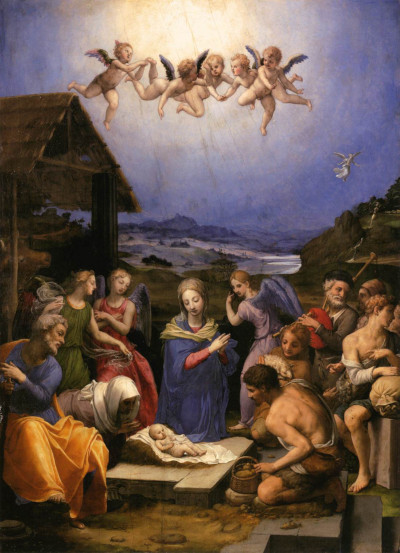
Adoration of the Shepherds
 Bronzino.jpg)
The Holy Family with the Infant Saint John the Baptist (Madonna Stroganoff)
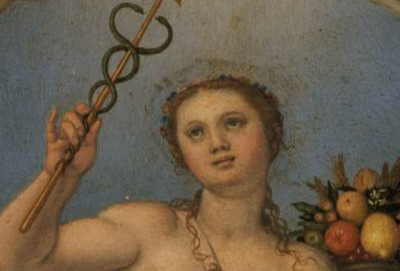
Allegory of Happiness
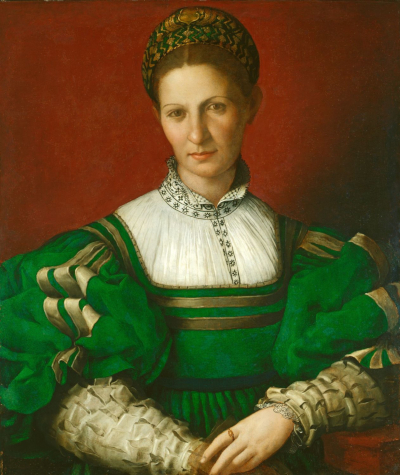
Portrait of a Lady in Green
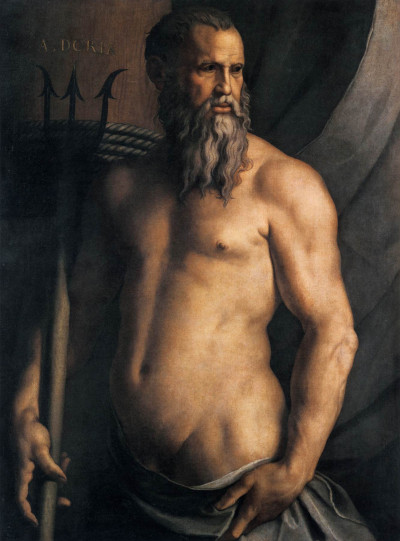
Portrait of Andrea Doria as Neptune
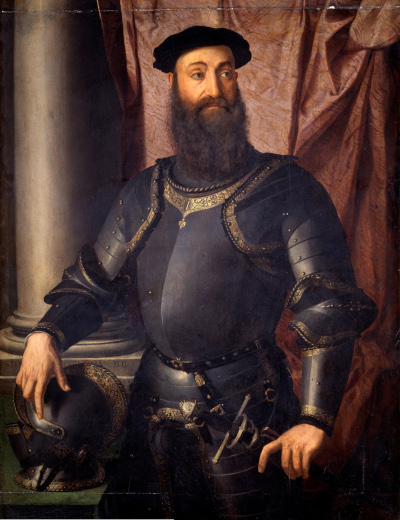
Portrait of Stefano Colonna
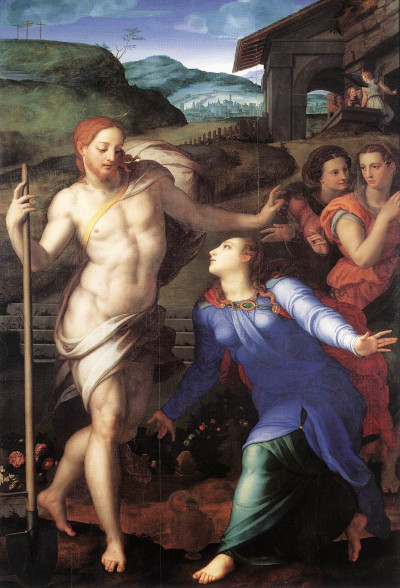
Noli me Tangere
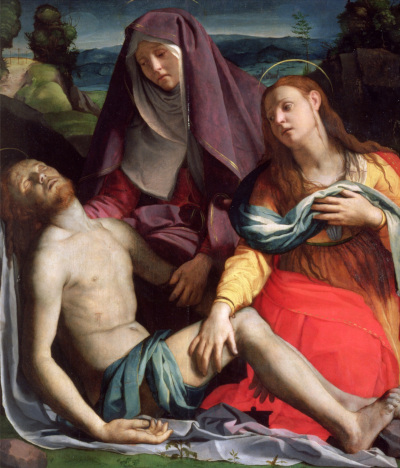
Pietà
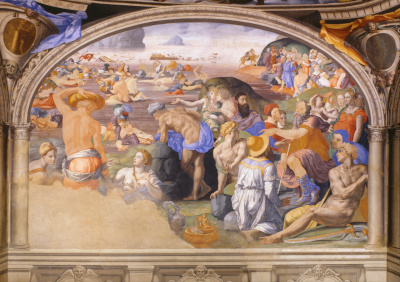
Crossing of the Red Sea
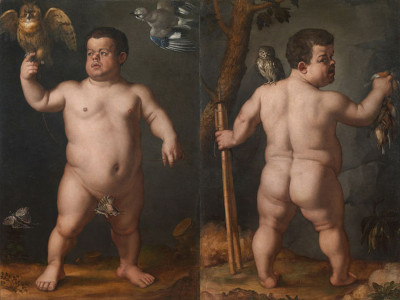
Portrait of the Dwarf Nano Morgante
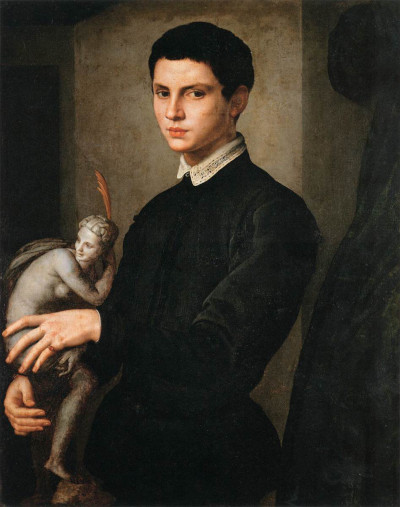
Portrait of a Man Holding a Statuette
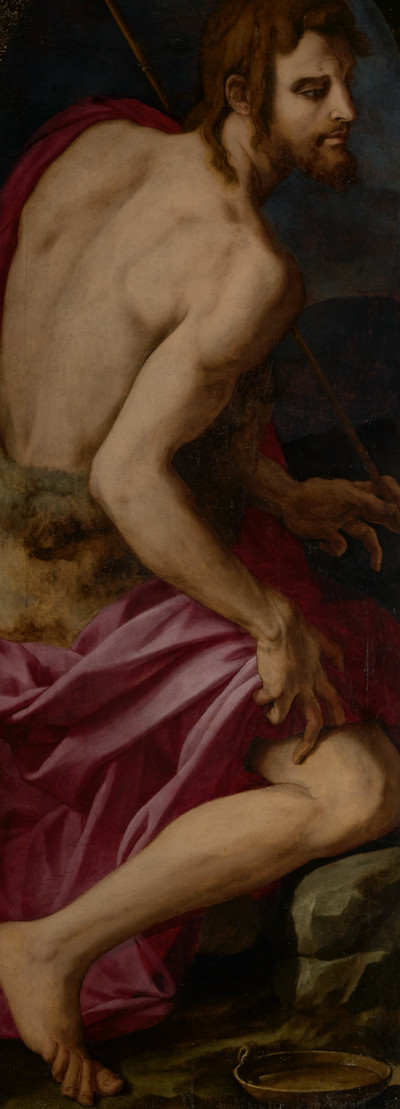
St John the Baptist
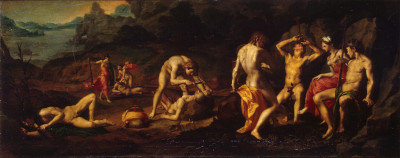
Flaying of Marsyas
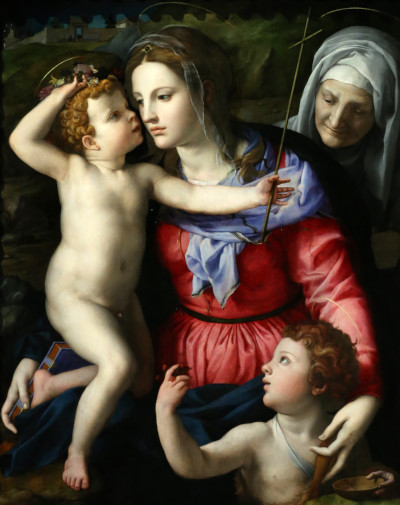
The Madonna and Child with Saints
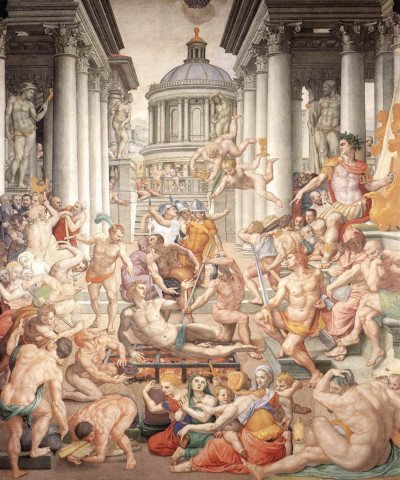
Martyrdom of St Lawrence
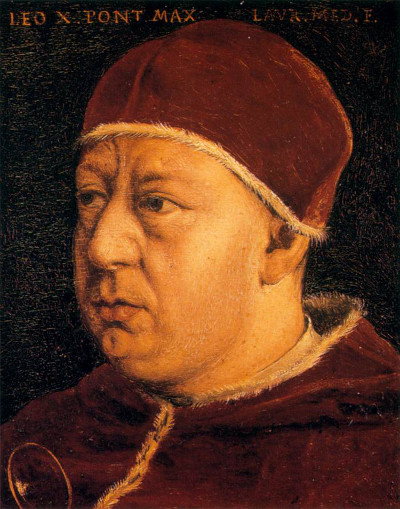
Pope Leo X
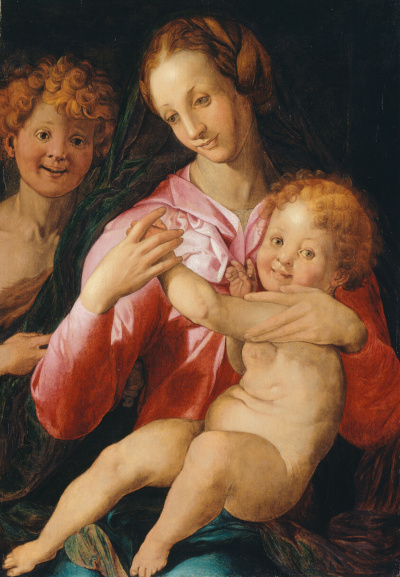
Virgin and Child with the Young Saint John the Baptist
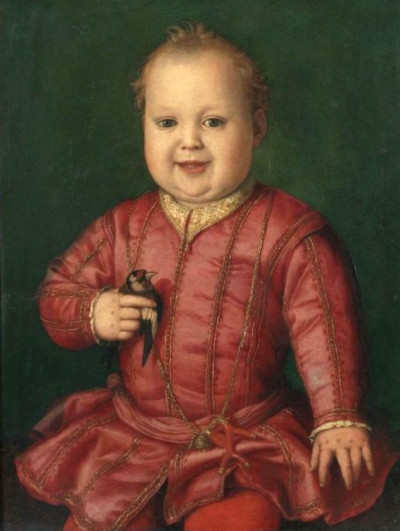
Portrait of Giovanni de' Medici as a Child
 Bronzino.jpg)
Isabella de Medici (1542-1576)
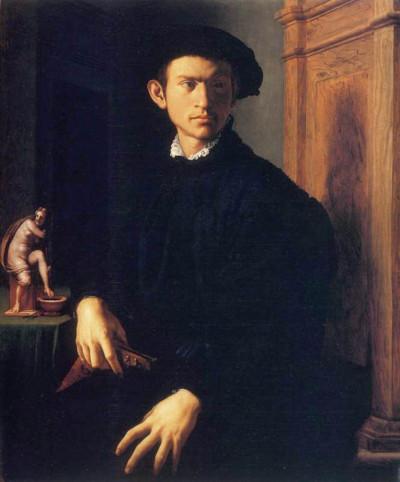
Portrait of a Young Man with a Lute
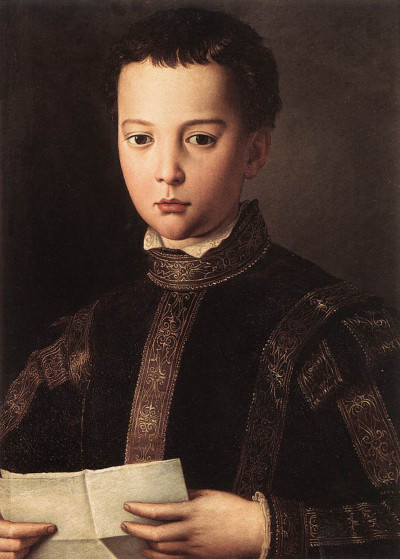
Portrait of Francesco I de' Medici
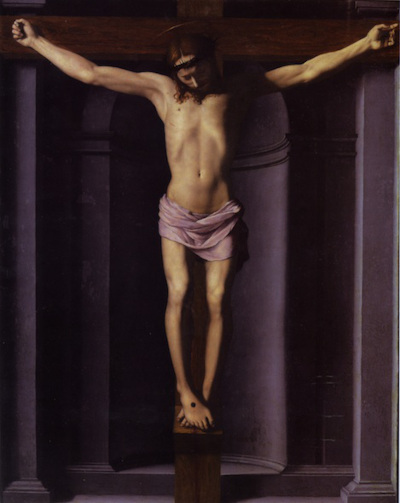
Christ at the Cross
 de' Medici Bronzino.jpg)



